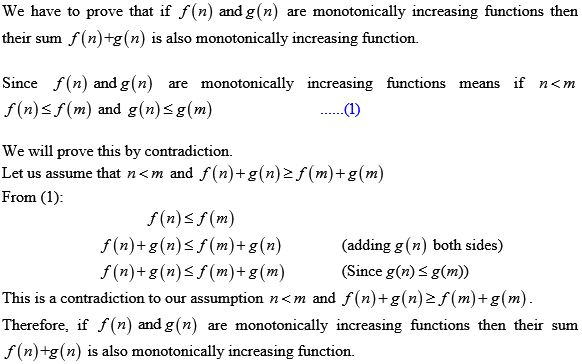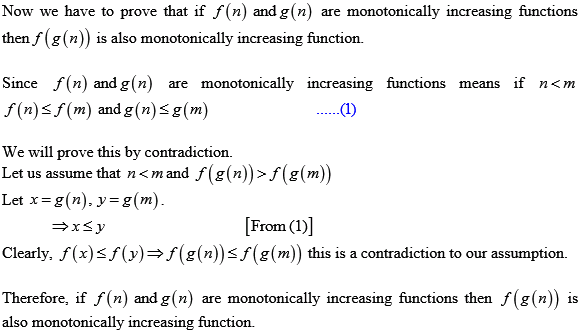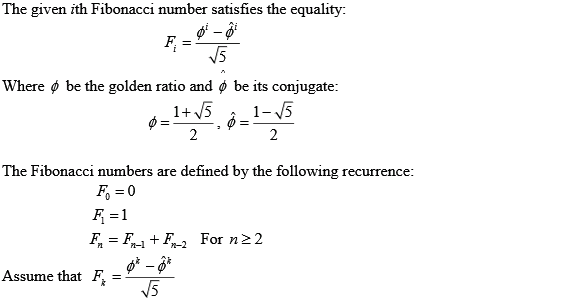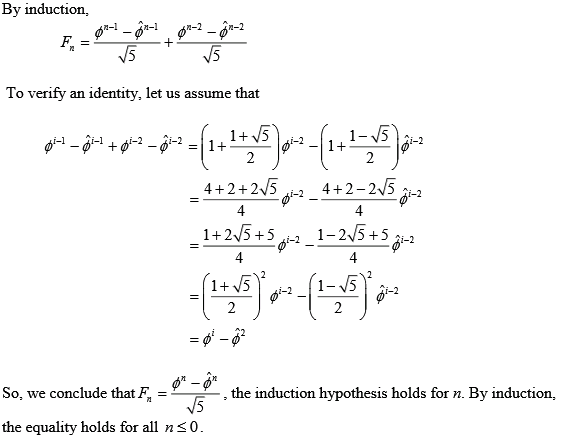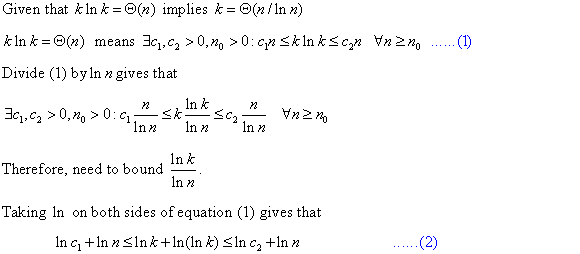The equation to be proved is .
.
Proof is shown below:
Consider the left side of the equation as t.
Then 
Apply log on both sides.
Then,

From equations (1) and (2)  .
.
Hence, proved that .
.
Consider the equation:

The above equation can be proved by using Stirling’s approximation:
The Stirling’s equation holds for all  and
and
 .
.

Apply logarithm on both sides of the above equation.
Then

Therefore, 
Consider the equation:

The above equation can be proved using the following definition.
If  , then
, then
 .
Where a and b are real constants and a
>1.
.
Where a and b are real constants and a
>1.
Apply the above limit theorem on n! and nn .

Since,  , it
can be concluded that
, it
can be concluded that 
Consider the given equation:

From the definition of  - notation,
if f(n) =
- notation,
if f(n) = (g(n)),
then
(g(n)),
then  .
.
Therefore, prove that  to show
that
to show
that .
.
Thus,

Here, n n grows rapidly
compared to (2 e ) n as
n approaches  .
Thus, it can be written symbolically that
.
Thus, it can be written symbolically that  or
or  .
.
A function  is
polynomially bounded if
is
polynomially bounded if  for some
constant
for some
constant .
.
A function  is
polynomially bounded is equivalent to proving that
is
polynomially bounded is equivalent to proving that
 for the
following reasons:
for the
following reasons:
1. If  is
polynomially bounded, then there exist constants
is
polynomially bounded, then there exist constants  such
that
such
that
for all  ,
,  .
.
Hence,  where c and
k are constants
where c and
k are constants

2. Similarly, if , then f (n)
is polynomially bounded.
, then f (n)
is polynomially bounded.
The essential proofs are

The equation can be proved by using Stirling’s approximation:
The equation holds for all 






Apply log both sides then





If a function is polynomially bounded, its log is log bounded. We can also observe that

Since 
Hence, 



Therefore,  .
.
So,
The function  is not
polynomially bounded.
is not
polynomially bounded.
The given polynomial function is 

Any polylogarithmic function grows more slowly than any positive polynomial function, i.e., that for constants

Substitute


Therefore, 
So, the function  is
polynomially bounded.
is
polynomially bounded.
The definition for the iterated function is as follows:

The equation  or
or  can be
written as follows:
can be
written as follows:
 or
or 
Consider that the  . Therefore,
. Therefore,
 .
.
And thus, by applying logarithm the number of iterations will be
reduced by 1. Therefore, it is written as  .
.
Hence, asymptotically  .
.
Thus, comparing to  ,
,  is
asymptotically larger.
is
asymptotically larger.
